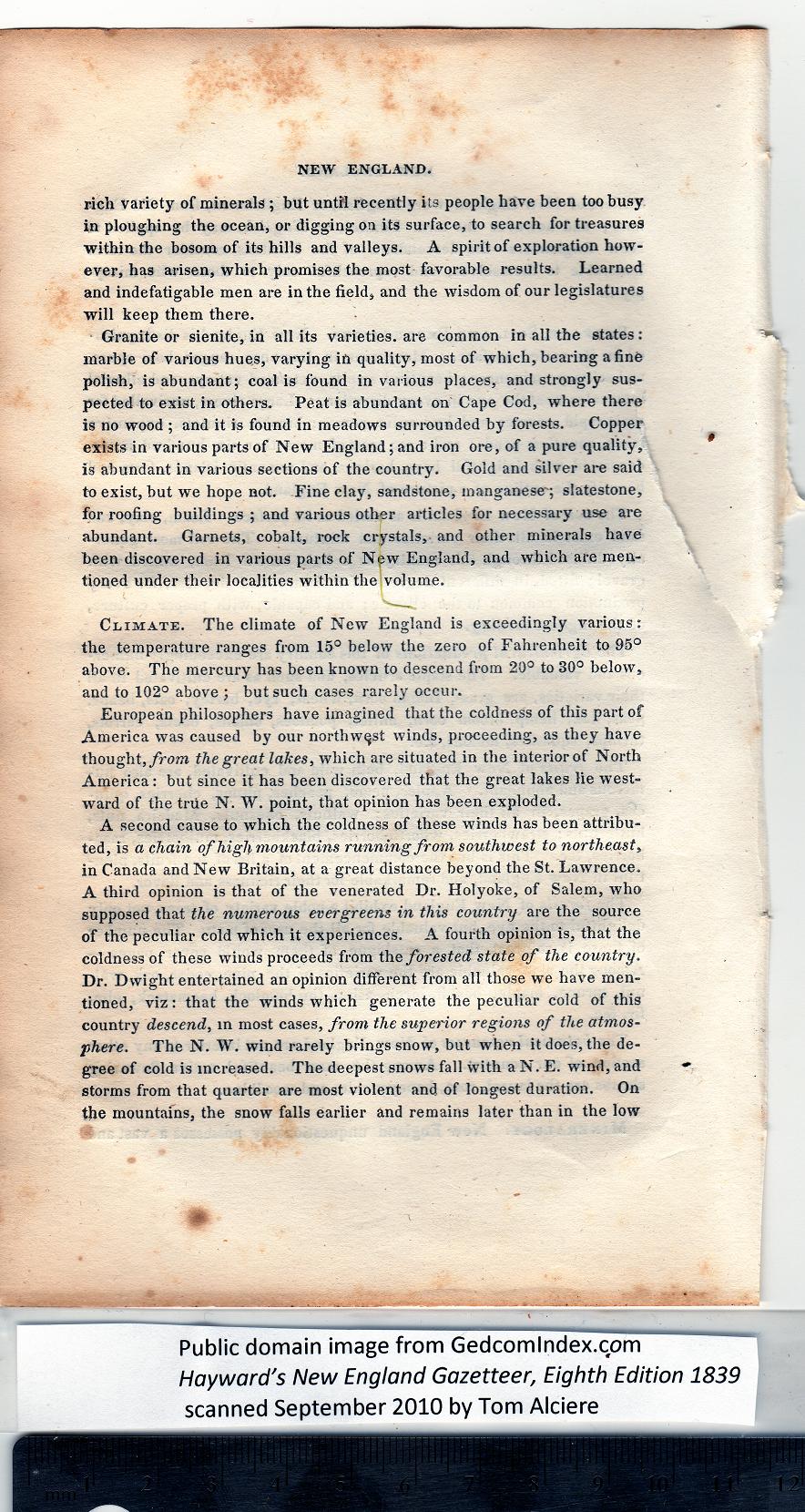|
NEW ENGLAND.
rich variety of minerals ; but until recently its people have been too busy
in ploughing the ocean, or digging on its surface, to search for treasures
within the bosom of its hills and valleys. A spirit of exploration how-
ever, has arisen, which promises the most favorable results. Learned
and indefatigable men are in the field, and the wisdom of our legislatures
will keep them there.
Granite or sienite, in all its varieties, are common in all the states :
marble of various hues, varying in quality, most of which, bearing a fine
polish, is abundant; coal is found in various places, and strongly sus-
pected to exist in others. Peat is abundant on Cape Cod, where there
is no wood ; and it is found in meadows surrounded by forests. Copper
exists in various parts of New England; and iron ore, of a pure quality,
is abundant in various sections of the country. Gold and silver are said
to exist, but we hope not. Fine clay, sandstone, manganese'; slatestone,
for roofing buildings ; and various other articles for necessary use are
abundant. Garnets, cobalt, rock crystals, and other minerals have
been discovered in various parts of New England, and which are men-
tioned under their localities within the volume.
Climate. The climate of New England is exceedingly various:
the temperature ranges from 15° below the zero of Fahrenheit to 95°
above. The mercury has been known to descend from 20° to 30° below,
and to 102° above; but such cases rarely occur.
European philosophers have imagined that the coldness of this part of
America was caused by our northwqst winds, proceeding, as they have
thought, from the great lakes, which are situated in the interior of North
America: but since it has been discovered that the great lakes lie west-
ward of the true N. W. point, that opinion has been exploded.
A second cause to which the coldness of these winds has been attribu-
ted, is a chain of high mountains running from southwest to northeast,
in Canada and New Britain, at a great distance beyond the St. Lawrence.
A third opinion is that of the venerated Dr. Holyoke, of Salem, who
supposed that the numerous evergreens in this country are the source
of the peculiar cold which it experiences. A fourth opinion is, that the
coldness of these winds proceeds from thq forested state of the country.
Dr. Dwight entertained an opinion different from all those we have men-
tioned, viz: that the winds which generate the peculiar cold of this
country descend, in most cases, from the superior regions of the atmos-
phere. The N. W. wind rarely brings snow, but when it does, the de-
gree of cold is increased. The deepest snows fall with a N. E. wind, and
storms from that quarter are most violent and of longest duration. On
the mountains, the snow falls earlier and remains later than in the low
PREVIOUS PAGE ... NEXT PAGE
This page was written in HTML using a program written in Python 3.2 and image-to-HTML text generated by ABBYY FineReader 11, Professional Edition.
|
